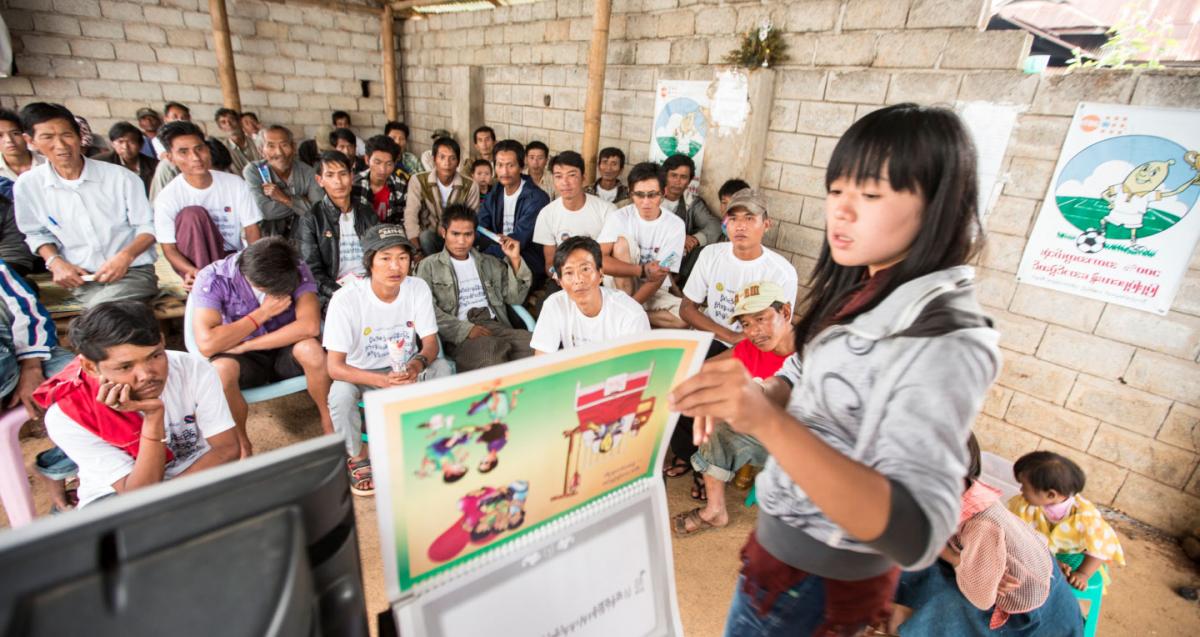
The cumulative results in each period (P1-P4) are shown against annual target in the percentages. LLINs Distributed and Nets treated are funded by the Global Fund only while the others are funded by GFATM and other donors.
Year 1 saw a massive and rapid scale-up of ITNs and LLINs in high and moderate risk villages, Some 454,720 LLINs (94% of target) were distributed in malaria endemic areas and accelerated mass campaigns for bed net treatment resulted in 689,072 (93%) nets treated with KO tablets in high and moderate risk villages.
Demand for malaria control services was further strengthened with the empowerment of 3, 955 (89%) village health volunteers through trainings both in prevention and treatment seeking and in prevention and case management of malaria. In addition, 5,443 (91%) health staff were re/trained on how to identify signs and symptoms of malaria. the number of malaria cases treated was lower than planned, at 309,599 (56%) confirmed malaria cases treated with ACTs and 168,531 (46%) people (probable and confirmed cases) treated with chloroquine. While it is possible that successes- in prevention, promotion and treatment seeking, diagnosis using highly sensitive and specific combo RDTs both at health facilities and in communities by volunteers- may account for the apparent underachievement in the number of cases treated, the observed malaria case trend could only be fully explained by a National Prevalence Survey.
For each of the three disease programmes, all SRs on close collaboration with UNOPS have used lessons learnt in Year 1 to prepare Year 2 workplan to improve on observed shortcomings while sustaining gains made with a view to reducing the burden of the diseases and their socio-economic effect in high risk or endemic areas.


